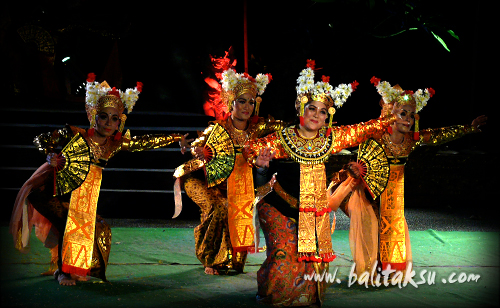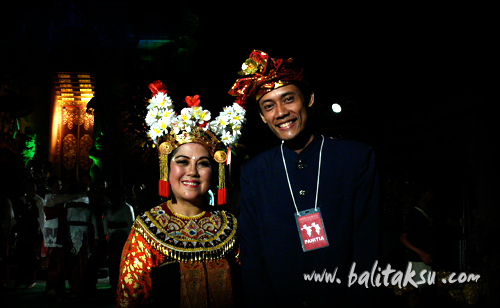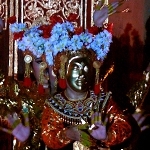
Legong Mintaraga
Legong Mintaraga
A Legong Dance Creation in Peliatan Style
The works of Ayu Bulantrisna Djelantik and Ni Made Suartini
(performed for the first time in the event “Mengenang Sang Guru” Thursday, August 29, 2007, at Ancak Saji Stage Puri Agung Peliatan, Ubud, Bali)
Legong Mintaraga is a Legong dance creation, danced by six dancers with style of Peliatan. Legong Mintaraga was first staged in an event of honoring two great Gurus MENGENANG SANG GURU (A Tribute to Anak Agung Gde Mandera and Gusti Made Sengog), in August 2007.
This event featured classical dances and instrumentals as well as some new creations, the works of the pupils as a form of expression of respect, affection, and gratitude to all those who have knowledge and experience that they get from these two Master Teachers through a process of learning and performance in the past.
One the pupils is Ayu Bulantrisna Djelantik, student of Niang Sengong, Bulantrisna created her new work with Ni Made Suartini. The Legong Mintaraga, gamelan arrangements by I Wayan Darya, with gamelan group Genta Bhuana Sari Peliatan.

Legong Mintaraga
The story of this Legong is based on Arjuna Wiwaha, written by Empu Kanwa in the 13th century. In the shadow puppet story (pewayangan), while meditating, Arjuna, also called Begawan Mintaraga, steadfastly faces a trial, angels led by Supraba Goddess who descend from heaven and try to seduce him. But he does not emerge from his meditation and is only aroused by the attack of a giant boar to face the ordeal sent by the Gods to test the warrior. Because of the strength and courage, he displayed in these two trials he was given the Pasopati, the weapon that would protect Arjuna and his brothers, the Pandavas, later on.
This work shows the need for courage to overcome worldly lusts and to be a good leader.
The movements in this dance are in Peliatan style and its development, thus producing a work of art oriented preserving and developing the classical Balinese dance, as well as presenting choreography that is open to a variety of newness.
As a musician who also participated in the group accompaniment, I highly appreciate this work, with beautiful choreography and accompaniment. Bulantrisna said that some parts of arrangement of this dance, were adapted from the footage of “Nocturne” in the “Tabuh-Tabuhan”, from Colin Mc Phee’s composition.
It is a masterpiece, how the choreographer and composer transforming the composition of this dance and supporting each other to become a very beautiful dance work. Legong Mintaraga.

With Bulantrisna Djelantik
Author : kadek ferry © f-studio
Photo Doc : Panitia Mengenang Sang Guru
Photographer : mayumi inouye
